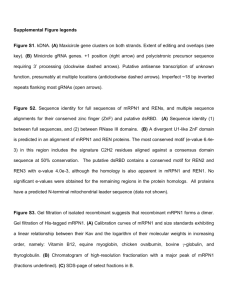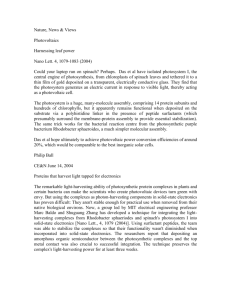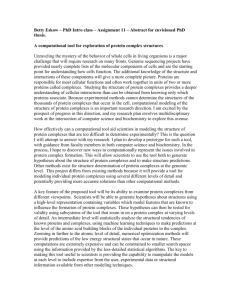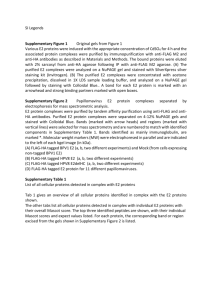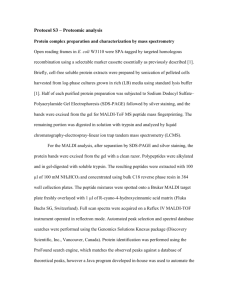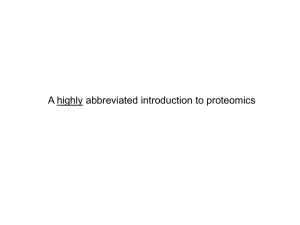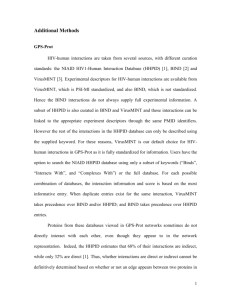Additional information
advertisement
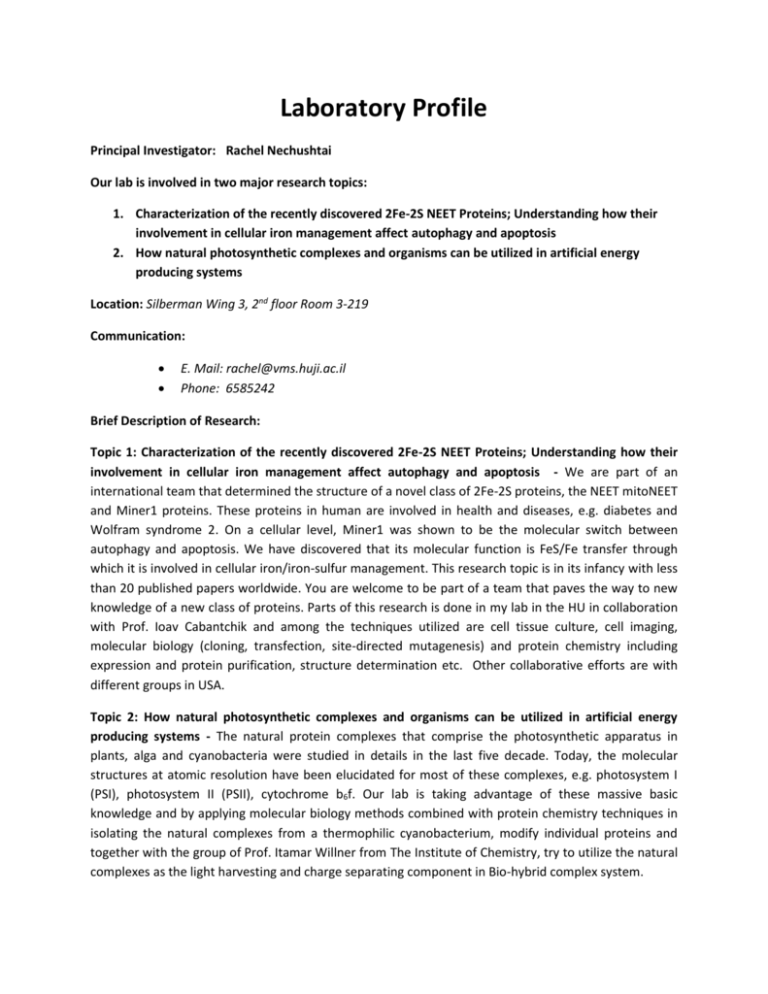
Laboratory Profile Principal Investigator: Rachel Nechushtai Our lab is involved in two major research topics: 1. Characterization of the recently discovered 2Fe-2S NEET Proteins; Understanding how their involvement in cellular iron management affect autophagy and apoptosis 2. How natural photosynthetic complexes and organisms can be utilized in artificial energy producing systems Location: Silberman Wing 3, 2nd floor Room 3-219 Communication: E. Mail: rachel@vms.huji.ac.il Phone: 6585242 Brief Description of Research: Topic 1: Characterization of the recently discovered 2Fe-2S NEET Proteins; Understanding how their involvement in cellular iron management affect autophagy and apoptosis - We are part of an international team that determined the structure of a novel class of 2Fe-2S proteins, the NEET mitoNEET and Miner1 proteins. These proteins in human are involved in health and diseases, e.g. diabetes and Wolfram syndrome 2. On a cellular level, Miner1 was shown to be the molecular switch between autophagy and apoptosis. We have discovered that its molecular function is FeS/Fe transfer through which it is involved in cellular iron/iron-sulfur management. This research topic is in its infancy with less than 20 published papers worldwide. You are welcome to be part of a team that paves the way to new knowledge of a new class of proteins. Parts of this research is done in my lab in the HU in collaboration with Prof. Ioav Cabantchik and among the techniques utilized are cell tissue culture, cell imaging, molecular biology (cloning, transfection, site-directed mutagenesis) and protein chemistry including expression and protein purification, structure determination etc. Other collaborative efforts are with different groups in USA. Topic 2: How natural photosynthetic complexes and organisms can be utilized in artificial energy producing systems - The natural protein complexes that comprise the photosynthetic apparatus in plants, alga and cyanobacteria were studied in details in the last five decade. Today, the molecular structures at atomic resolution have been elucidated for most of these complexes, e.g. photosystem I (PSI), photosystem II (PSII), cytochrome b6f. Our lab is taking advantage of these massive basic knowledge and by applying molecular biology methods combined with protein chemistry techniques in isolating the natural complexes from a thermophilic cyanobacterium, modify individual proteins and together with the group of Prof. Itamar Willner from The Institute of Chemistry, try to utilize the natural complexes as the light harvesting and charge separating component in Bio-hybrid complex system.
